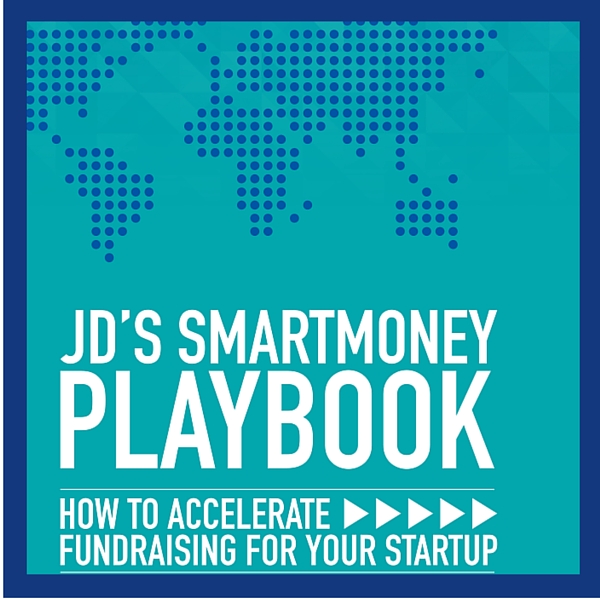No matter how many times I speak to groups about raising money for their startups, I always receive the same two questions. “How much money should I raise?” and “Who should I raise it from?”
Personally, I’ve found the second question to be more critical than the first. But for the purpose of this article, let’s address the first question of how much money you should raise.
Many “experts” will tell you that the answer is 18-24 months, but I think that’s the wrong answer. Here’s why.
Your goal isn’t to just stay alive for 18-24 months. Rather, your real goal of raising money is to use cash to increase the value of your business. That’s why you’re selling some of your stock, right? To increase the value of your remaining stock.
The real answer to this critical question lies in understanding how to use cash to hit a value inflection point in your company.
What is the value inflection point?
Just as there are several steps in a staircase, every company goes thru several rounds of financing from startup to exit event. Your aim in raising money is to intelligently deploy it to increase the value of your business.
Let’s say you want to raise $200,000. An angel investor invests in your business at a valuation of $2 million, meaning you sold 10% of the company. What you want to focus on is using that investment to hit key milestones that will increase your business value in the next financing round.
What kind of milestones? That depends on your stage, industry and goals, but could include things like launching a product or securing key customers.
Here, watch as I explain why understanding this is so critical.
Staying with this example of raising money at a $2 million valuation, your goal is to define milestones that, when hit, will increase your value to $10 million at the next round. That $8 million increase is value inflection.
I believe the actual valuation number is less important than the relative valuation from round to round. If you succeed in taking the $200K angel investment at a valuation of $2m, then raise the next round at $10 million valuation, you just created $8m of new value. That’s a big success in the startup world and you’ll be off and running.
The right question for entrepreneurs of startups is “How much money do I need to hit key milestones?”
Those milestones could be:
- Creating a product prototype
- Launching a product
- Hiring key personnel
- Developing new product features
- Achieving a specific level of customer or revenue growth
- Moving from a provisional patent to full approved patent status
Make a list of at least three key milestones you want to achieve in the next 18 months. Milestones that will increase the value of your business. These milestones should be clearly spelled out in your executive summary. Then, figure out how much cash you need to hit those milestones.
In my personal experience, that’s the best answer to the question, “How much money should I raise?”
what are the key milestones that you’re focused on achieving that will take your valuation from $2m to $10m or more.
Understanding Burn Rate
As I mentioned in the video, most of the cost in early-stage startups is in hiring people and product development. There are also a number of other essential expenses you’ll incur. Things like,
- office rent
- payroll
- accounting
- computers
- Internet and telecom
- health and other insurance
- supplies
- etc.
 I describe how to find the right investors in the SmartMoney Playbook. It’s free, and you can grab it here.
I describe how to find the right investors in the SmartMoney Playbook. It’s free, and you can grab it here.
Start with your milestone list first. Follow that with your staffing list. Who do you need on your team to hit those milestones? It can include both full-time and contract personnel.
All this, along with your monthly expenses listed above, is the foundation of your budget spreadsheet. The number one thing that must come out of this exercise is called your “burn rate.”
Rocket ships rely on various stages of fuel boosters to break through levels of the atmosphere on their galactic journeys.
Until you reach sustainable profitability, your company is going to burn through cash every month. One of the most critical data points for any entrepreneur to be aware of at all times is:
- how much fuel do we have in the tank?
- how quickly are we burning that fuel?
Knowing the answer to that will tell you how many months of cash you have. This number should be reported at every board of director meeting.
Like the rocket ship, you’ll need multiple rounds of “booster” financing to grow your business. But in order to maximize value to you and previous investors, it’s critical to raise only the cash you need to hit the key milestones that will result in value inflection and survive for 18-24 months.
You generally don’t want to raise more than that, because raising money is selling stock. Your stock. And you want to sell more stock at a higher valuation, so raise only what you need to hit milestones that will get you to that higher valuation level.
If you’re interested in why I think the second question (Who should I raise money from) is more important than the first, check out my articles, What is Smart Money and The Cost of Not Raising Smart Money.
Join Us in a 30-Day Sprint for SmartMoney.
Our sprint program kicks off October 3, 2017 and is reserved for those who are poised and ready to take action to accelerate their path to funding. Sign up here to get on our wait list.







